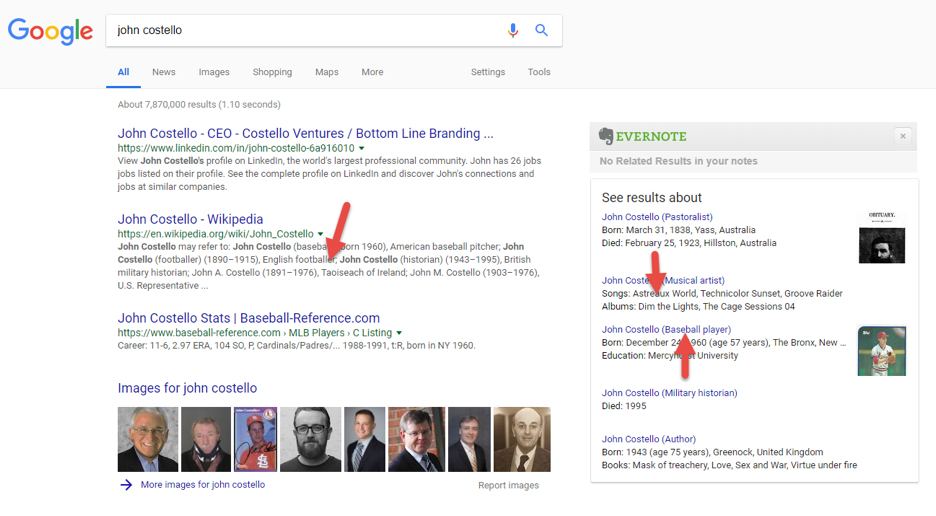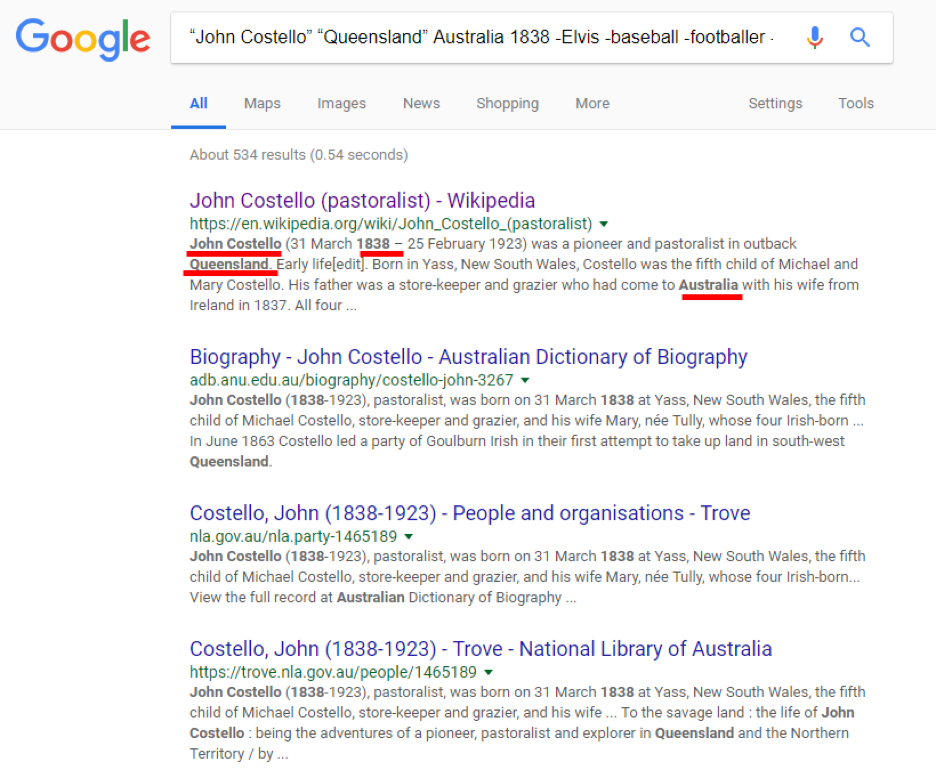Better Google communication
By Lisa Louise Cooke.
At the Bridging the Past & Future Congress held in Sydney in March this year, Lisa Louise Cooke kindly agreed to do a blog post for GSQ.
 Google search expert Lisa Louise Cooke provides genealogists with three ways to improve Google search results. See how these small improvements can make a big difference in your own genealogy Google searches!
Google search expert Lisa Louise Cooke provides genealogists with three ways to improve Google search results. See how these small improvements can make a big difference in your own genealogy Google searches!
Lisa Louise Cooke

Imagine traveling to a foreign country where a different language is spoken. It would be very difficult indeed to navigate your way if you did not speak the local language. As you approached folks on the street for directions you would probably not be able to effectively communicate your request. Just knowing a few common words, though, can make a big difference in finding your hotel or the airport.
The same is true with Google search. If you’re not getting the search results you were hoping for, there’s a good chance that you’re not accurately speaking Google’s language.
Not long ago I produced a free webinar (available at the Genealogy Gems YouTube channel) in which I shared how genealogists can significantly improve their Google search results. I heard from many people around the world who were surprised and what a big impact could be made by implementing a few small changes.
The “language” of Google is spoken with search operators. These are words and symbols that give Google more specific instructions about what you mean by the words you are using in your search query. Let’s look at 3 powerful techniques that can improve your Google search results. In our example, we will be Googling for information on John Costello.
1. Subtract unwanted words with a minus sign (-)
If you have an ancestor with a common surname, then you have most likely experienced frustration when you have attempted to Google them. For instance, an ancestor with the surname Green can bring up everything from lawn care to Kermit the Frog. Or perhaps their last name is Lincoln and U.S. President Abraham Lincoln is dominating the search results page. Irrelevant search results can be discouraging and even lead genealogists to give up on Google.
Here’s the good news: you can remove unwanted search results from the list you receive by simply subtracting them with a minus (-) sign. Let’s look at a few examples.
When we Google John Costello, the results indicate that there are several people with that name out there on the internet.

In this case, it would benefit us to subtract words like these:
John Costello -Elvis -baseball -footballer -Astreaux
Notice that we can subtract many words, and that the minus sign touches each word that is to be removed
2. Use quotation marks to make the name mandatory and exact
We want to zero in on the exact name of our ancestor, John Costello. We can do this by putting quotation marks around his name like this:
“John Costello” -Elvis -baseball -footballer -Astreaux
This achieves a few important tasks. First, it tells Google that these two words, John and Costello, must appear together and in this order.
Second, it instructs Google that the phrase must appear on every search result. Without the use of quotation marks, you may receive search results for webpages that include one or both names and no particular order. That’s frustrating indeed!
And third, Google now understands exactly how we want the words to be spelled, and it will not deviate.
3. Add additional information to the name
As you can imagine, throughout history there are very likely many people with the name John Costello. Our job as the researcher is to provide Google with more specific information so that it can return to us more relevant results. In genealogy location plays a critical role in identifying the correct individual. Here’s how we will modify our search query:
“John Costello” “Queensland” Australia -Elvis -baseball -footballer -Astreaux
Note that we put quotation marks around the location of Queensland, since we are confident that is the location that will appear in association with this particular John Costello. This tells Google it must appear in every search result. We have added Australia but without quotation marks to help direct Google. There’s a chance that the word Australia may not appear on pages that we are interested in, so for now we won’t include the quotation marks around it.
In addition to location, timeframe is a key identifying factor. John Costello was born in 1838 so let’s add that year to our search query:
“John Costello” “Queensland” Australia 1838 -Elvis -baseball -footballer -Astreaux
Have you noticed that I have been placing the more important search terms toward the front of the query, and then at the end subtracted the words I don’t want? While no one knows exactly how Google prioritizes words, general thought is to start with the most important aspects and work your way down the query. This is how most people tend to think, and search, and Google wants to deliver relevant results to as many users as possible. By doing that successfully, Google has become a verb!
When we pull it all together, I think we can safely say that we have achieved excellent results:

Improve Google search results even more dramatically
Learn more about how to Google in my recorded webinar video Reveal Your Unique Story through DNA, Family History & Video. It’s a free 90-minute video that will explain more about how to improve your Google searches for genealogy, along with other powerful strategies for reconstructing your family history. While you’re watching, click the Subscribe button and you’ll be notified of each free video tutorial I publish in the future at www.youtube.com/genealogygems.
This webinar only scratches the surface of how to improve your searches. My book The Genealogist’s Google Toolbox is dedicated to the topic, and I have included several in-depth Google search for genealogy video classes in Genealogy Gems Premium eLearning Membership.
Wishing you many more genealogy gems!

Comments
Better Google communication — No Comments
HTML tags allowed in your comment: <a href="" title=""> <abbr title=""> <acronym title=""> <b> <blockquote cite=""> <cite> <code> <del datetime=""> <em> <i> <q cite=""> <s> <strike> <strong>